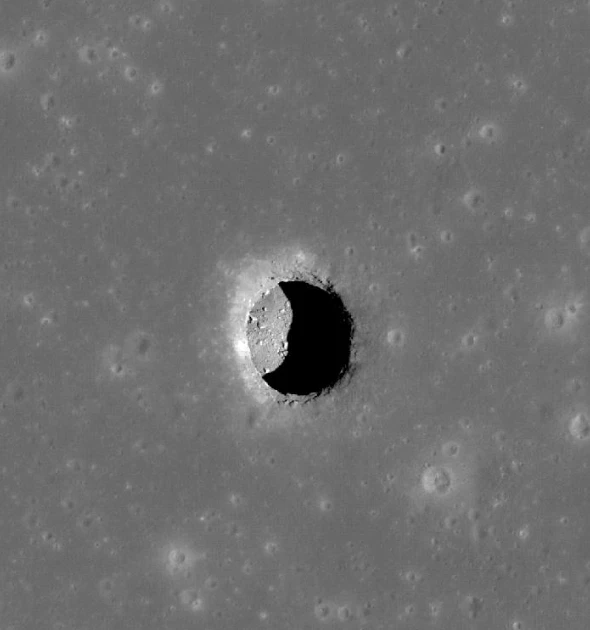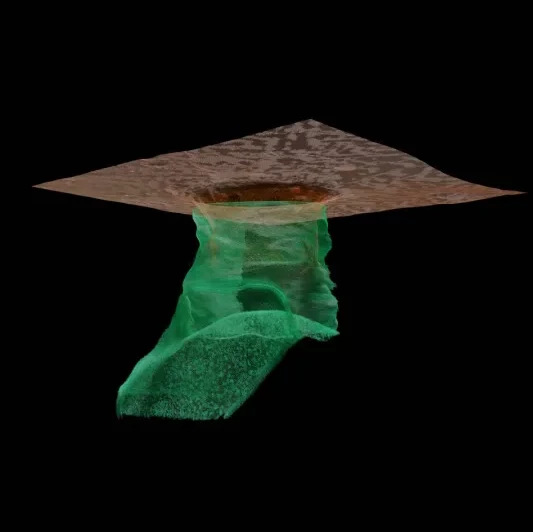If you've wondered where future Moon explorers will live, it may be in natural caves deep beneath the lunar crust. Radar data from NASA's Lunar Reconnaissance Orbiter confirms that giant lava tubes lead to tunnels large enough to house entire bases.
The Moon is about as unpleasant a place to set up house as you're likely to find this side of Mars. The temperatures swing between 250 °F (121 °C) in daylight and -208 °F (-133 °C), there's 150 times the radiation as on the surface of the Earth, micro-meteors keep raining down, the surface is covered with a highly abrasive dust that sticks to everything, and the whole place is about as lively as Death Valley on a slow Sunday.
For well over half a century, scientists and engineers have been looking for ways to protect future Moon colonists. Both thermal insulation and radiation shielding basically involve thick walls, so many plans for lunar outposts involved burying habitats under heaps of soil, burrowing into the sides of craters or deep into the lava plains, and even detonating nuclear warheads underground to create instant caverns.

One thing all these options have in common is that they require a lot of work to construct. An alternative is to find some sort of natural caves that could be modified to meet human needs. There's never been any liquid water flowing on the Moon, but there was once a great deal of volcanic activity. Earthbound telescopes saw rills or gullies that later proved to be collapsed lava tubes. Then, in the Apollo era, close-up images showed large, very deep craters that later turned out to be empty lava pits. If these are connected to deep lava tubes, it could be a boon to future explorers.
However, "if" was the operative term for these tubes. The pits are certainly deep enough, but whether there were tubes at the bottom remained largely a matter of speculation for over 50 years.
That's changed thanks to an international team of scientists led by Lorenzo Bruzzone from the University of Trento. Using radar data collected by NASA's Lunar Reconnaissance Orbiter, they looked at a pit known as Mare Tranquillitatis Pit, which is (no prizes for guessing) in the Sea of Tranquility. The radar reflections showed that there is indeed a large tube connected to the bottom of the pit shaft.

"These structures had been hypothesized for over 50 years, but this is the first time ever that we have demonstrated their existence," said Bruzzone. "As part of a NASA mission, the Miniature Radio-Frequency (Mini-RF) radar captured a series of images of the lunar surface in 2010. Many years later, we analyzed these images with complex signal processing technologies recently developed in our laboratory and discovered that part of the radar reflections from an area of the Sea of Tranquility can be attributed to an underground tube. This discovery provides the first direct evidence of an accessible rock tunnel beneath the Moon's surface. Data analysis has allowed us to build a model that represents the initial part of the tunnel. It is very likely that it is an emptied lava tube."
The pit is 330 ft (100 m) across and is up to 560 ft (170 m) deep, so the cross section of the tube is likely to be enormous. Granted, getting in and out of such a pit would require a lift like those used in terrestrial mine shafts, but, if there isn't too much rubble, there's enough space for whole installations to set up under the lava roof, including habitats, workshops, laboratories, and even hydroponic farms with plenty of room to spare.
It might even be possible to seal off the tube and fill it with air, turning into one gigantic habitat. Anyone fancy strapping on a pair of wings and seeing if they can fly in 1/6th gravity?
The research was published in Nature Astronomy.
Source: University of Trento






